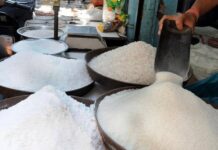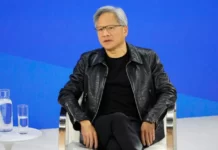For my mother, the need to plan for her retirement income came a lot sooner than expected. This July, my father passed away after having contracted Covid-19, at the age of 63. He was not young, but we all expected him to be around a lot longer than we were able to have him. And in the midst of having to deal with the burial and sorrow of his loss, my mother was then left with a question that – crass though it felt – was not one that could be ignored: what will she do for an income now that my father is gone.
While my father was past the traditional retirement age of 60 in Pakistan, he was still employed and had an income when he passed away. Now, she would have to fend for herself financially. Of course, my brother and I – both in our early to mid-30s – have incomes that can help support her, but my mother needs an income that is all her own, something she does not rely on anyone else for, even her own two sons.
And so, she, like many other people in retirement, face a challenge: how to make the assets that they have accumulated over the course of their lifetimes last through their retirement years. And it is a challenge made more difficult by the limited menu of options available to retirees in Pakistan.
Before we proceed further, we want to make one thing very clear. This article is about retirement income, not retirement savings. The two are very different.
Retirement saving is the amount of money people save and invest during their working years so that they will have enough assets in retirement.
Retirement income is the amount of money that they can generate from their total assets that they have saved up by the time they retire, minus any other financial obligations they may still have.
Retirement assets: This is the amount of money you have saved up for your retirement that is available exclusively for your retirement income needs. It includes all the retirement saving you did over the course of your working life, plus the investment returns on the money you saved and invested (whether it be in stocks, bonds, gold, real estate, or any other investment). It excludes any money you may have saved up, but need to spend on other purposes. For example, say you just retired and have a lot of assets, but you also have a younger child whose education and weddings still need to be paid for. Your retirement assets equal your total assets, minus the cost of the education and wedding that you still need to spend on.
For any retiree, there are three things they need to balance:
- Cash yield: The amount of cash income in the form of either interest, dividends, or rent payments that is sufficient to cover their monthly needs.
- Inflation protection: Having that cash yield continue to grow over time at a pace that at least equals the rate of inflation in the economy, if not exceed it.
- Low risk: Older people can afford to take far fewer risks with their investments than younger people can, since they cannot afford to wait for the investment to recover its losses. They need the cash today, which means that high-risk investments – even if they meet the other two criteria – are not appropriate for them.
This is where the awkwardness in conversations typically starts. People have a hard time admitting how much they need to live, and how much they can reasonably expect to make with the total amount of assets that they have at their disposal for retirement.
For this article, we will lay out each of the three considerations above in the form of the concrete examples of two people I recently advised on their retirement income planning, both of whom had remarkably similar financial circumstances.
Rule 1: Never assume your expenses will go down in retirement.
Generally speaking, expenses never go down after retirement. Your living expenses might temporarily decrease, but then your healthcare expenses start rising as you grow older. The decrease in the other expenses is usually balanced out, and often exceeded, by the rise in healthcare expenses. So never plan for your expenses to go down.
Why does this matter? Because your income immediately prior to retirement is a good benchmark for how much money you will need as income in retirement itself. So, for example, if you made Rs250,000 a month before retirement, do not assume you will be able to make do with much less than that same amount in the first year after retirement. And given Pakistan’s inflation levels, assume the amount you need will increase at least at the same level as inflation over the course of your retired life. (See Rule 3 for more details.)
Rule 2: Have realistic expectations of what your cash yield will be.
This is the hardest part: people have a tendency to have very unrealistic expectations of how much cash their investments can generate. Take, for instance, the two people I mentioned above. Both of them have about Rs10 million (Rs1 crore) in cash as their main retirement assets, plus the house that they currently live in. Before retirement, both people had an income of approximately Rs250,000 a month.
That Rs1 crore can be invested in a variety of ways, but there is no low-risk or even medium-risk investment that will yield Rs250,000 a month in income. For an investment to yield that much, it would need to have a dividend yield or interest rate equal to 30% per year. No such investment exists, at least not one that has a reasonable level of risk appropriate for a retired person.
So, what is a realistic number? Generally speaking, fixed income investments – such as National Savings certificates – will have some of the higher levels of yields, which tend to be in the 10% to 12% range in most years. In very high inflation years, they might go higher, but those years are very uncommon.
For the retirees in question, if they invested 100% of their money into the best National Savings investment for themselves, they would put the full Rs1 crore into the Behbood Savings Certificates – a specially designed government bond for retired individuals – which has a current yield of 10.32% per year, which would result in Rs86,000 per month in income. That is not bad, but it is not even close to the amount of money they were making before retirement.
Now, both of these people were previously government employees, and expect to get about Rs75,000 per month in a pension, but even that would only get their income up to Rs161,000 per month, or a nearly 36% decrease in their pre-retirement income. That might be just enough to help them cover their expenses, but probably not.
And, of course, that income from their investments would be fixed, meaning it would stay the same over the course of the next 10 years, a time during which inflation would eat away at the purchasing power of their income. By the tenth year, the purchasing power of that Rs86,000 would be equal to almost exactly half; or the equivalent of about Rs43,000 today.
Rule 3: Your investment had better build in protection against inflation
This is the part that gets really hard, especially if one does not have large amounts of money. The cash yield needs to not just be high, it actually needs to grow over time. But the problem is that the cash yield of investments that grows over time tends to be quite low. However, ignore inflation is not an option either, since it averages about 8% a year in Pakistan, which means that your purchasing power halves roughly once every 9-10 years.
Take, for instance, a stock portfolio of the KSE-100 index companies, which would result in a portfolio that yields significant dividends that generally increase at a pace higher than inflation. The problem, however, is that total dividend yield for Pakistani stocks as a whole rarely ever exceed 5% per year. That is difficult for a pensioner to justify investing in, even though that 5% will grow much faster than inflation over the course of their retirement, having Rs1 crore result in just Rs41,000 in monthly income is hard to justify if Rs1 crore is all you have saved up for retirement.
There is a relatively new asset class – real estate investment trusts (REITs) – that generally have both a higher cash yield, and a yield that grows with time, though only one is publicly listed and available to local investors: the Dolmen City REIT, which generally has a yield of between 9% and 10% a year, but one that typically grows by the rate of inflation, or higher, over time.
So, on the surface, that would be the solution: just put your money in the Dolmen City REIT, which would yield around Rs75,000 per month (assuming a 9% yield), and that Rs75,000 would grow every year with inflation, meaning your purchasing power would be preserved.
Alas, life is not quite so simple. Which brings us to our next rule.
Rule 4: Retirees cannot afford high risk investments.
No matter how attractive an investment, retirees cannot afford to take high risk. In the case of Dolmen City REIT, the asset itself is relatively high quality: it is Karachi’s most desirable block of offices and has the headquarters of blue-chip companies like Engro, Procter and Gamble Pakistan, Citibank Pakistan, etc. as well as a mall that is one of the largest in Pakistan, and one of Karachi’s most desirable shopping locations.
The problem, however, is that the asset completely lacks diversification. It is literally all in one location in Karachi, and that is it. If anything happens to that one location, the rents from those high-end shops and corporate offices could slow to a trickle very quickly, and there would be no other assets to keep the dividend flows going to the shareholders.
Now, we believe that Dolmen is still a high quality asset and at least a portion of a retiree’s portfolio should include a REIT like Dolmen City. However, it is not sufficiently diversified enough to have the entirety of a retiree’s assets be placed into that single REIT.
Rule 5: Only the rich can afford to be sentimental about a family home.
You will notice that none of the solutions we have so far examined come anywhere close to yielding the kind of retirement income that the two people in question need. Both of them need about Rs250,000 a month in a fixed income that will grow by 8% or more every year or more in order to keep the purchasing power of the income constant.
The way to achieve that would be to build a diversified portfolio that includes government bonds (such as Behbood Savings Certificates), a REIT such as Dolmen, as well as high-quality dividend-paying stocks. A well-balanced portfolio that includes these three components would result in a weighted average yield of approximately 8%, which would be expected to grow by the average inflation rate or more over the course of the next two decades.
If an 8% dividend yield is the best one can do for a portfolio of assets that is the appropriate level of risk, while also growing one’s cash income to beat inflation, that means that one needs to have Rs1.5 crore (Rs15 million) in retirement assets for every Rs1 lac (Rs100,000) in monthly retirement income.
In the case of the two people we talked about earlier, take that Rs250,000 and subtract the pension amount, and one is left with Rs175,000 per month in retirement income that they need to cover with retirement assets. That means that they need Rs2.63 crore (Rs26.3 million) in retirement assets compared to the Rs1 crore they currently have in cash. Where will that additional Rs1.63 crore come from?
As we noted earlier, that cash is not the only asset both of these individuals have. Each also owns a home, and in both cases, the home is worth several times what they have in cash, upwards of Rs10 crore each.
Where will that money come from? Sell that house, subtract Rs1.63 crore from the selling price, and buy a new home worth a little less than the home you just sold.
Many people, of course, already do this, but too many people get too sentimental about the home, which is often a family home, and do not want to sell it.
Here is the hard truth: every family home will eventually get sold by the family, unless you are very, very wealthy and can afford to have one family member continue to buy out all other heirs in every generation. That almost never happens, which means every family home is with a family temporarily.
If you are not rich, you cannot afford to be sentimental about a family home that your family will – at some point – have to vacate anywhere. The least you can do is ensure that you do not end up spending your retirement years financially dependent on your children or other relatives.
Sell the house. It is almost always the right decision.
(Disclosure: The author is a founder of Elphinstone, a fintech startup that is working to create a free tool called SmartRupee that will allow users to set up automatic deposits into curated, diversified investment portfolios, based on their financial goals.)
Interested in learning more about retirement planning? Have another question about personal finance? E-mail your questions to [email protected]. Your identifying information will be kept completely confidential.


























There are only two investment options for retirees in Pakistan that beat the nominal inflation rate :
1. National Savings,
2. Microfinance Banks
Although, there are only a few banks where you feel secure.
I would love to hear about any other options that afford double digit returns.
Kool
Thank you so much for such a valuable information.